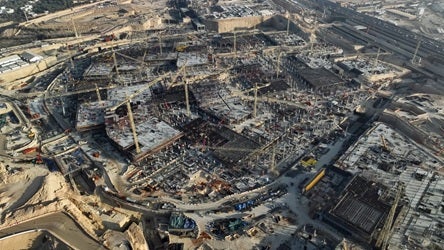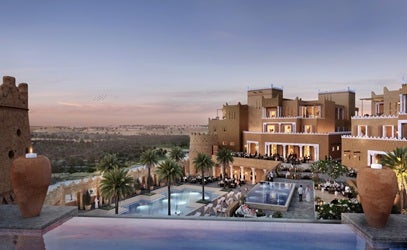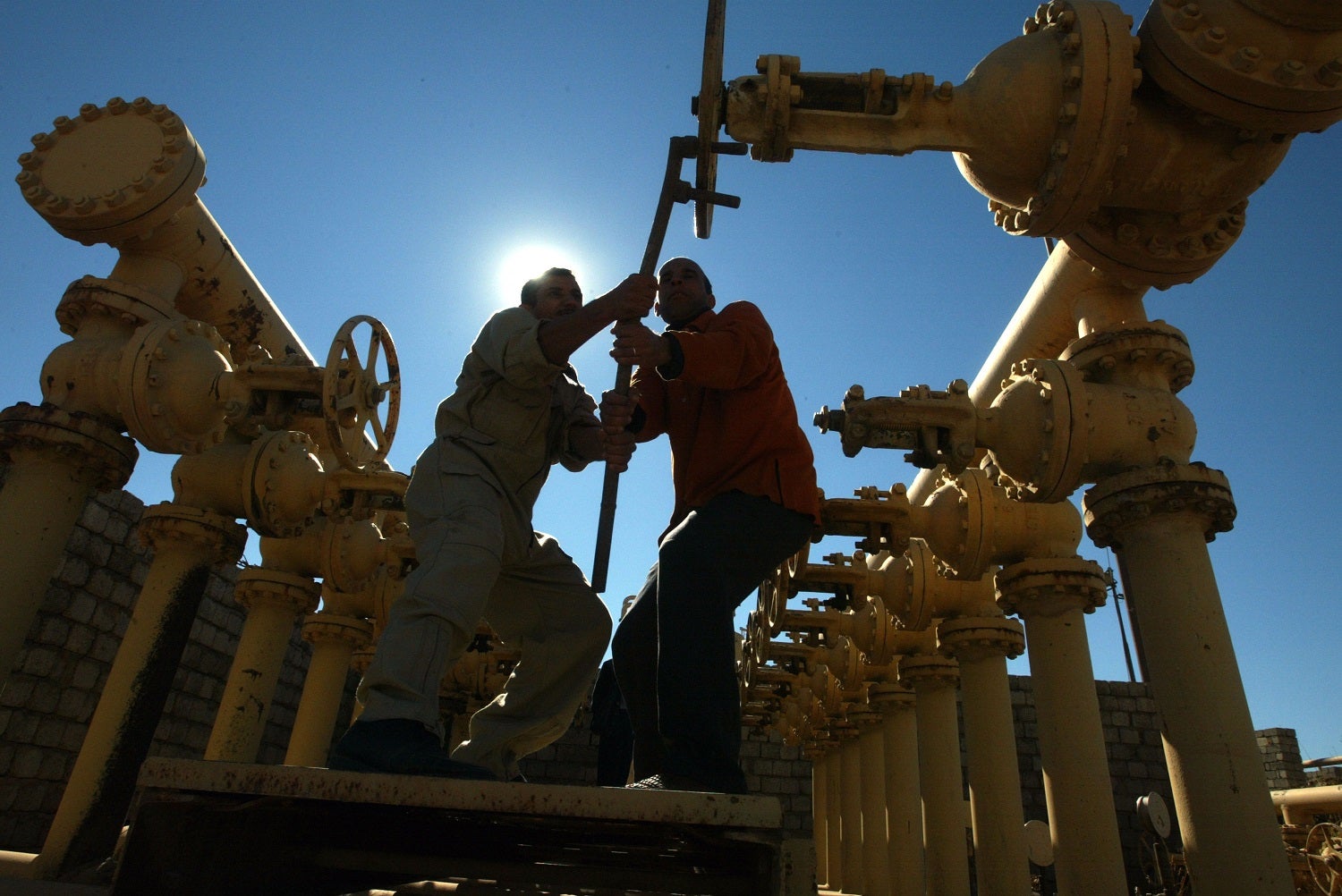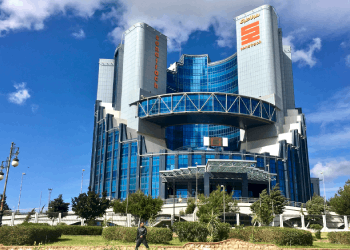Small reactors top nuclear agenda
25 August 2023
This package also includes: Mena pushes for nuclear future

Small modular reactor (SMR) solutions could offset concerns about capital expenditure, construction delays and spent-fuel reprocessing that large-scale nuclear power plants present.
 SMRs are advanced nuclear reactors that have a power capacity of up to 300MW a unit, which is about one-third of the generating capacity of traditional nuclear power reactors, according to the International Atomic Energy Agency.
SMRs are advanced nuclear reactors that have a power capacity of up to 300MW a unit, which is about one-third of the generating capacity of traditional nuclear power reactors, according to the International Atomic Energy Agency.
They can be factory-assembled, transported and installed in locations not suitable for larger nuclear power plants, such as industrial zones or remote areas with limited grid capacity. This makes them more affordable and easier to build than large reactors.
So far, there are only two advanced SMR installations globally, one in China and the other in Russia. The US’ NuScale is also working towards deploying its first modules in Idaho.
Saudi Arabia and Jordan have been considering deploying SMR solutions as part of their nuclear power programmes.
In 2020, King Abdullah City for Atomic & Renewable Energy (KA-Care) and South Korea’s Science & ICT (Information & Communication Technology) Ministry set up a joint venture to undertake the commercialisation and construction of South Korea’s system-integrated modular advanced reactor technology in the kingdom with the help of Korea Hydro & Nuclear Power.
Nuclear energy is having a revival moment as a recognised part of climate mitigation
Karen Young, Centre on Global Energy Policy, Columbia University
Seeking partners
Jordan, for its part, signed an agreement with Russia for the construction of two 1,000MW reactors in 2015, but the project was cancelled three years later.
Jordan is now considering small nuclear reactors and is talking to potential partners including Russia, South Korea, France and the UK to determine the optimal technical specifications and how to adapt the reactors to the Jordanian environment, Khaled Toukan, chairman of the Jordan Atomic Energy Commission, said in April.
Jordan hopes to use small nuclear reactors for water desalination and power production.
“We have done all the studies,” Toukan said at the time. “The infrastructure is in place, and studies on site selection and the provision of cooling water are in place. Now, we are comparing technologies and we want to get the go-ahead from the government.”
According to Karen Young, a senior research scholar at the Centre on Global Energy Policy at Columbia University in the US, “nuclear energy is having a revival moment as a recognised part of climate mitigation”.
She says: “We simply do not have other ways of ramping up non-carbon energy production as easily. Technology innovations in SMRs, among others, make this look like a more viable option.”
However, SMRs are as yet unproven, points out Paddy Padmanathan, co-founder and vice-chairman of green hydrogen firm Zhero. He adds that solar and wind projects with battery energy storage systems cost significantly less, despite the subsidies some governments allocate to nuclear power plant projects.
We simply do not have other ways of ramping up non-carbon energy production as easily
Spent fuel
Regardless of a nuclear plant’s size, the storage or reprocessing of the resulting highly radioactive solid waste is a key safety and environmental concern.
Nuclear reactors require ceramic pellets of low-enriched uranium oxide. These are stacked vertically and encased in metallic cladding to form a fuel rod. The fuel rods are bundled into fuel assemblies that are placed into the reactor.
The fuel pellets remain in the reactors for five or six years of operation, or until the fission process uses up the uranium fuel.
The US, which generates about 2,000 tonnes of spent fuel a year, stores the solid waste across 70 reactor sites in the country. Research and development into how to recycle spent fuel, or to design advanced reactors that could consume it, is also under way.
With 58 nuclear power plants generating over 70 per cent of its electricity, France produces nearly 1,150 tonnes of spent fuel a year. Unlike the US, France recycles spent fuel through a process that converts spent plutonium – formed in nuclear power reactors as a by-product of burning uranium fuel – and uranium into a mixed oxide that can be reused in nuclear plants to produce more electricity.
In Iran, meanwhile, the policy at the 1,000MW Bushehr reactor entails cooling down spent fuel in an onsite pool, a process that takes at least five years. It is then transported in steel cylinders that are welded closed to a central storage location in the country’s Anarak region.
UAE policy
The UAE government is developing a long-term storage policy for spent fuel from its Barakah nuclear power plant, the first reactor of which began producing electricity in 2021. The current plan involves placing the fuel assemblies in concrete and steel-lined cooling pools located at the Barakah plant, after which they will be stored in dry casks either on site or at a long-term storage facility.
According to Emirates Nuclear Energy Corporation, the UAE still has plenty of time to make decisions about spent-fuel management, as the first batch of nuclear fuel will be stored for 20-30 years in the spent-fuel pool.
Exclusive from Meed
-
 Webuild wins $600m Diriyah Square project deal
Webuild wins $600m Diriyah Square project deal14 July 2025
-

-
 Penspen to expand workforce in Neutral Zone
Penspen to expand workforce in Neutral Zone14 July 2025
-
 Eni signs $1.35bn Algerian oil and gas deal
Eni signs $1.35bn Algerian oil and gas deal14 July 2025
-

All of this is only 1% of what MEED.com has to offer
Subscribe now and unlock all the 153,671 articles on MEED.com
- All the latest news, data, and market intelligence across MENA at your fingerprints
- First-hand updates and inside information on projects, clients and competitors that matter to you
- 20 years' archive of information, data, and news for you to access at your convenience
- Strategize to succeed and minimise risks with timely analysis of current and future market trends

Related Articles
-
 Webuild wins $600m Diriyah Square project deal
Webuild wins $600m Diriyah Square project deal14 July 2025
Italian contractor Webuild has announced that it has won a $600m contract from Diriyah Company for a package for the Diriyah Square project.
The contract relates to construction works on package three of the Diriyah Square project. It involves the finishing and mechanical, electrical and plumbing works on more than 70 buildings and public spaces within Diriyah Square.
These assets cover a total area of about 365,000 square metres.
Webuild is already working on the underground multi-storey car park at Diriyah Square.
The three-floor underground car park will serve the mixed-use Diriyah Square district, which will include leisure and entertainment, hotels, retail, grade A offices, the King Salman Grand mosque and residential units designed in the traditional Najdi architectural style.
The car park has a floor area of 1 million square metres, with underground roads and tunnels below Diriyah Square, and a capacity for 10,500 cars.
The parking facility will directly connect commuters with all of Diriyah’s destinations, including Wadi Hanifah, the Western Ring Road and a national motorway. It will be a key component of the City of Riyadh Arterial Road system.
In an official statement on its website, Webuild said that the construction works on the car park are 55% completed.
MEED reported in January 2021 that Diriyah Company had selected Webuild for the super basement car park at the Diriyah project in Riyadh.
Diriyah gigaproject
The Diriyah masterplan envisages the city as a cultural and lifestyle tourism destination. Located northwest of Riyadh’s city centre, it will cover 14 square kilometres and combine 300 years of history, culture and heritage with hospitality facilities.
The company awarded several significant contracts last year, including three contracts worth over SR21bn ($5.5bn). These included an estimated $2bn contract awarded to a joint venture of El-Seif Engineering & Contracting and China State to build the North Cultural District.
In July last year, Diriyah also awarded a $2.1bn package to a joint venture of local contractor Albawani and Qatar’s Urbacon to construct assets in the Wadi Safar district of the gigaproject.
Then in December, Diriyah Company awarded an estimated SR5.8bn ($1.5bn) contract to a joint venture of local firm Nesma & Partners and the local branch of Man Enterprise for its Jabal Al-Qurain Avenue cultural district, located in the northern district of the Diriyah Gate project.
Once complete, Diriyah will have the capacity to accommodate 100,000 residents and visitors.
 READ THE JULY 2025 MEED BUSINESS REVIEW – click here to view PDF
READ THE JULY 2025 MEED BUSINESS REVIEW – click here to view PDFUAE and Turkiye expand business links; Renewed hope lies on the horizon for trouble-beset Levant region; Gulf real estate momentum continues even as concerns emerge
Distributed to senior decision-makers in the region and around the world, the July 2025 edition of MEED Business Review includes:
> AGENDA: UAE-Turkiye trade gains momentum> INTERVIEW 1: Building on UAE-Turkiye trade> INTERVIEW 2: Turkiye's Kalyon goes global> INTERVIEW 3: Strengthening UAE-Turkiye financial links> INTERVIEW 4: Turkish Airlines plans further growth> CURRENT AFFAIRS: Middle East tensions could reduce gas investments> GCC REAL ESTATE: Gulf real estate faces a more nuanced reality> PROJECTS MARKET: GCC projects market collapses> INTERVIEW 5: Hassan Allam eyes role in Saudi Arabia’s transformation> INTERVIEW 6: Aseer region seeks new investments for Saudi Arabia> LEADERSHIP: Nuclear power makes a global comeback> LEVANT MARKET FOCUS: Levant states wrestle regional pressures> GULF PROJECTS INDEX: Gulf projects index continues climb> CONTRACT AWARDS: Mena contract award activity remains subdued> ECONOMIC DATA: Data drives regional projects> OPINION: A farcical tragedy that no one can endTo see previous issues of MEED Business Review, please click herehttps://image.digitalinsightresearch.in/uploads/NewsArticle/14259832/main.jpg -
 August deadline for Diriyah Pendry superblock package
August deadline for Diriyah Pendry superblock package14 July 2025

Saudi gigaproject developer Diriyah Company has asked firms to submit commercial proposals by 13 August for a contract to build the Pendry superblock package in the second phase of the Diriyah Gate development (DG2).
MEED understands that the tender was issued in June, with the technical bid submission deadline set for 6 July.
The Pendry superblock encompasses the construction of a hotel, known as the Pendry Hotel, along with residential and commercial assets.
The project will span an area of 75,365 square metres and is located in the northwestern district of the DG2 area.
Earlier this month, MEED exclusively reported that Diriyah Company is preparing to tender more superblock packages this quarter, following the receipt of prequalification statements from interested firms.
Notices were issued in mid-June for packages that include the Waldorf Astoria superblock and the Edition superblock, both located in DG2.
The Waldorf Astoria superblock is a mixed-use development featuring the Waldorf Astoria Residences & Hotel, commercial and residential facilities and office spaces.
The Waldorf Astoria Hotel is a 200-key property, while the Waldorf Astoria Residences will offer around 46 branded residences.
The project is located along the Grand Boulevard South and the Northern Arterial Road in the Boulevard Northwestern district at DG2.
The prequalification documents for this package were submitted on 29 June.
Prequalification documents for the Edition superblock were submitted on 2 July.
This package comprises a mix of residential, commercial and office spaces, including the 200-key Edition Hotel and 150-key Equinox Hotel.
The project is situated between King Khalid Road and the Grand Boulevard within the Boulevard East district in DG2.
Diriyah Company has also received prequalification statements from firms interested in constructing the upcoming Radisson Red superblock in DG2.
The Radisson Red superblock comprises a hotel, residential apartments, retail facilities, commercial office spaces and a park.
The project is situated in the Boulevard East district, between King Khalid Road and the Grand Boulevard in Diriyah.
Diriyah also tendered a contract in April to build the new iconic museum in the DG2 area.
Diriyah gigaproject
The Diriyah masterplan envisages the city as a cultural and lifestyle tourism destination. Located northwest of Riyadh’s city centre, it will cover 14 square kilometres and combine 300 years of history, culture and heritage with hospitality facilities.
The company awarded several significant contracts last year, including three contracts worth over SR21bn ($5.5bn). These included an estimated $2bn contract awarded to a joint venture of El-Seif Engineering & Contracting and China State to build the North Cultural District.
In July last year, Diriyah also awarded a $2.1bn package to a joint venture of local contractor Albawani and Qatar’s Urbacon to construct assets in the Wadi Safar district of the gigaproject.
Then in December, Diriyah Company awarded an estimated SR5.8bn ($1.5bn) contract to a joint venture of local firm Nesma & Partners and the local branch of Man Enterprise for its Jabal Al-Qurain Avenue cultural district, located in the northern district of the Diriyah Gate project.
Once complete, Diriyah will have the capacity to accommodate 100,000 residents and visitors.
 READ THE JULY 2025 MEED BUSINESS REVIEW – click here to view PDF
READ THE JULY 2025 MEED BUSINESS REVIEW – click here to view PDFUAE and Turkiye expand business links; Renewed hope lies on the horizon for trouble-beset Levant region; Gulf real estate momentum continues even as concerns emerge
Distributed to senior decision-makers in the region and around the world, the July 2025 edition of MEED Business Review includes:
> AGENDA: UAE-Turkiye trade gains momentum> INTERVIEW 1: Building on UAE-Turkiye trade> INTERVIEW 2: Turkiye’s Kalyon goes global> INTERVIEW 3: Strengthening UAE-Turkiye financial links> INTERVIEW 4: Turkish Airlines plans further growth> CURRENT AFFAIRS: Middle East tensions could reduce gas investments> GCC REAL ESTATE: Gulf real estate faces a more nuanced reality> PROJECTS MARKET: GCC projects market collapses> INTERVIEW 5: Hassan Allam eyes role in Saudi Arabia’s transformation> INTERVIEW 6: Aseer region seeks new investments for Saudi Arabia> LEADERSHIP: Nuclear power makes a global comeback> LEVANT MARKET FOCUS: Levant states wrestle regional pressures> GULF PROJECTS INDEX: Gulf projects index continues climb> CONTRACT AWARDS: Mena contract award activity remains subdued> ECONOMIC DATA: Data drives regional projects> OPINION: A farcical tragedy that no one can endTo see previous issues of MEED Business Review, please click herehttps://image.digitalinsightresearch.in/uploads/NewsArticle/14258798/main0303.jpg -
 Penspen to expand workforce in Neutral Zone
Penspen to expand workforce in Neutral Zone14 July 2025

UK-based engineering and project management company Penspen is expanding its headcount in the Neutral Zone, which is shared by Saudi Arabia and Kuwait, according to a senior executive.
Penspen currently has 130 employees working in the Neutral Zone, also known as the Divided Zone. The company expects to increase the headcount to 200 by the end of the year, according to Neale Carter, the company’s executive vice-president for the Middle East, Africa and Asia-Pacific.
“It’s a challenging environment, but we’re very pleased to be there,” he said.
Penspen was invited to join the tendering programme for a range of projects for state-owned Kuwait Gulf Oil Company (KGOC), which is a partner in Al-Khafji Joint Operations (KJO) alongside Saudi Arabia’s Aramco Gulf Operations Company (AGOC).
Penspen was previously the project management consultant for KJO in the Neutral Zone from 2006 until 2017, when US-based Jacobs replaced them in the role.
Penspen then went through the tendering process in 2022 and won the contract back in 2023.
The current contract is a five-year project management consultancy services contract.
The Neutral Zone has seen an uptick in oil and gas activity in the past couple of years.
In May, MEED reported that KJO has more than 20 projects currently ongoing to develop the Khafji field, which is located in the shared territory.
Additionally, KJO is currently in the tendering phase with engineering, procurement and construction (EPC) works on the Dorra gas field development project, which is also located in the Divided Zone.
KJO has divided the scope of work on the Dorra gas field development project, which is estimated to be valued at up to $10bn, into four EPC packages – three offshore and one onshore.
In May, Saudi Arabia and Kuwait announced a new oil discovery in the shared territory.
The oil was discovered in the North Wafra Wara-Burgan field, located five kilometres north of the onshore Wafra field, within Wafra Joint Operations – a 50:50 joint venture of Kuwait Gulf Oil Company and US energy company Chevron.
 READ THE JULY 2025 MEED BUSINESS REVIEW – click here to view PDF
READ THE JULY 2025 MEED BUSINESS REVIEW – click here to view PDFUAE and Turkiye expand business links; Renewed hope lies on the horizon for trouble-beset Levant region; Gulf real estate momentum continues even as concerns emerge
Distributed to senior decision-makers in the region and around the world, the July 2025 edition of MEED Business Review includes:
> AGENDA: UAE-Turkiye trade gains momentum> INTERVIEW 1: Building on UAE-Turkiye trade> INTERVIEW 2: Turkiye's Kalyon goes global> INTERVIEW 3: Strengthening UAE-Turkiye financial links> INTERVIEW 4: Turkish Airlines plans further growth> CURRENT AFFAIRS: Middle East tensions could reduce gas investments> GCC REAL ESTATE: Gulf real estate faces a more nuanced reality> PROJECTS MARKET: GCC projects market collapses> INTERVIEW 5: Hassan Allam eyes role in Saudi Arabia’s transformation> INTERVIEW 6: Aseer region seeks new investments for Saudi Arabia> LEADERSHIP: Nuclear power makes a global comeback> LEVANT MARKET FOCUS: Levant states wrestle regional pressures> GULF PROJECTS INDEX: Gulf projects index continues climb> CONTRACT AWARDS: Mena contract award activity remains subdued> ECONOMIC DATA: Data drives regional projects> OPINION: A farcical tragedy that no one can endTo see previous issues of MEED Business Review, please click herehttps://image.digitalinsightresearch.in/uploads/NewsArticle/14254527/main.jpg -
 Saudi Arabia signs deals for $8.3bn of renewables projects
Saudi Arabia signs deals for $8.3bn of renewables projects14 July 2025
Register for MEED’s 14-day trial access
A consortium of Acwa Power, Water & Electricity Holding Company (Badeel) and Saudi Aramco Power Company (Sapco) has signed power purchase agreements (PPAs) with Saudi Power Procurement Company (SPPC) for seven renewable energy projects that will require $8.3bn of investment.
The projects, which have a total capacity of 15,000MW, include five large-scale solar photovoltaic plants with a total capacity of 12,000MW and two large-scale wind energy plants with a total capacity of 3,000MW.
Financial closes are expected by the third quarter of 2025. The projects are scheduled to start operating in the second half of 2027 and the first half of 2028.
The projects are part of Saudi Arabia’s National Renewable Energy Programme (NREP), which is led and supervised by the Energy Ministry. PIF has committed to developing 70% of Saudi Arabia’s renewable energy target capacity by 2030.
With the addition of these new projects, Acwa Power's solar and wind portfolio in Saudi Arabia now comprises 21 projects, representing more than 34GW of combined renewable capacity. Acwa Power's total renewable capacity portfolio, which includes projects in other countries, totals 51.9GW.
The Public Investment Fund (PIF) is the largest shareholder in Acwa Power; it is listed on the Saudi Stock Exchange (Tadawul) with a 44% stake. The PIF wholly owns Badeel. The PIF holds a 16% stake in Aramco, which is also listed on the Tadawul.
Acwa Power recently said it is raising SR7.1bn ($1.9bn) with a rights issue to finance its equity contributions in its growing portfolio of domestic and international energy and water projects, as part of its plan to triple managed assets by 2030.
According to the prospectus for the rights issue, between 75% and 85% of the proceeds will go towards funding its share in current and upcoming projects, while up to 20% may be used for mergers and acquisitions. The remainder will support corporate activities and early-stage project development to accelerate delivery timelines.
https://image.digitalinsightresearch.in/uploads/NewsArticle/14258744/main.jpg -
 Eni signs $1.35bn Algerian oil and gas deal
Eni signs $1.35bn Algerian oil and gas deal14 July 2025
Algeria’s state-owned oil and gas company Sonatrach and the Italian company Eni have signed a production-sharing hydrocarbons contract (PSC) estimated to be worth $1.35bn.
The contract covers the exploration and exploitation of the Zemoul El-Kebir concession area, located in the Berkine Basin, approximately 300 kilometres east of Hassi Messaoud, according to a statement by Sonatrach.
The deal with Eni is the latest in a string of high-profile agreements that Sonatrach has announced with international oil and gas companies.
The contract with Eni was signed under Hydrocarbons Law No 1913 and extends for a period of 30 years, with an extendable option for an additional 10 years.
It includes a seven-year exploration period, with $110m of the estimated $1.35bn investment budget expected to be used in the exploration phase.
In its statement, Sonatrach said: “The work programme associated with this contract includes the use of innovative technological methods, including the latest digital solutions related to exploitation, in addition to the use of modern technologies to improve production and recover reserves.
“It is worth noting that, within the framework of implementing this contract, preference is given to the use of local content and the use of subcontracting services from national operators.”
Expected production from the area covered by the deal has been estimated at 415 million barrels of oil equivalent, including 9.3 billion cubic metres of gas, over the contract period.
The signing of the final PSC with Eni follows a provisional deal that was signed between Sonatrach and Eni on 19 May 2024.
As well as signing the PSC relating to the Zemoul El-Kebir concession area, the two parties also signed a gas agreement aimed at defining the terms of the hydrocarbons contract relating to the marketing of dry gas quantities from the operating area, intended for export.
A framework agreement was also signed between Sonatrach and Eni Corporate University, aiming to develop the skills of Sonatrach employees and transfer knowledge through the Eni Corporate University training institution, for a period of three years.
In June, Algeria awarded five out of the six oil and gas exploration licences it offered during its 2024 bidding round, a move viewed as a success by stakeholders in the country’s energy sector.
The companies that were awarded blocks included France’s TotalEnergies, state-owned QatarEnergy, Eni and PTTEP of Thailand.
The latest licensing round was followed by meetings between Algeria’s President Abdelmadjid Tebboune and delegations from US-based oil and gas companies ExxonMobil and Chevron.
Project activity across Algeria’s energy, industrial and manufacturing sectors is steadily building as the country focuses on a vertically-integrated strategy that leverages the exploitation of its natural resources.
 READ THE JULY 2025 MEED BUSINESS REVIEW – click here to view PDF
READ THE JULY 2025 MEED BUSINESS REVIEW – click here to view PDFUAE and Turkiye expand business links; Renewed hope lies on the horizon for trouble-beset Levant region; Gulf real estate momentum continues even as concerns emerge
Distributed to senior decision-makers in the region and around the world, the July 2025 edition of MEED Business Review includes:
> AGENDA: UAE-Turkiye trade gains momentum> INTERVIEW 1: Building on UAE-Turkiye trade> INTERVIEW 2: Turkiye's Kalyon goes global> INTERVIEW 3: Strengthening UAE-Turkiye financial links> INTERVIEW 4: Turkish Airlines plans further growth> CURRENT AFFAIRS: Middle East tensions could reduce gas investments> GCC REAL ESTATE: Gulf real estate faces a more nuanced reality> PROJECTS MARKET: GCC projects market collapses> INTERVIEW 5: Hassan Allam eyes role in Saudi Arabia’s transformation> INTERVIEW 6: Aseer region seeks new investments for Saudi Arabia> LEADERSHIP: Nuclear power makes a global comeback> LEVANT MARKET FOCUS: Levant states wrestle regional pressures> GULF PROJECTS INDEX: Gulf projects index continues climb> CONTRACT AWARDS: Mena contract award activity remains subdued> ECONOMIC DATA: Data drives regional projects> OPINION: A farcical tragedy that no one can endTo see previous issues of MEED Business Review, please click herehttps://image.digitalinsightresearch.in/uploads/NewsArticle/14254529/main.png

